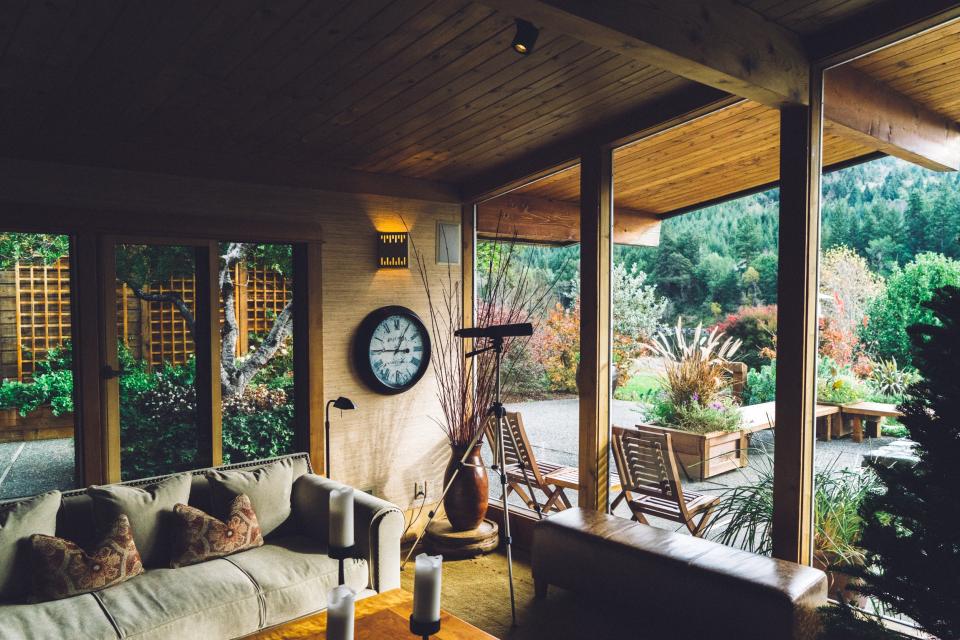If you’re planning to place your home on the market, you’ll want to make sure prospective buyers can picture themselves enjoying the great outdoors. From the wrong trees and shrubs to poor patio lighting and pools, realtor.com offers seven outdoor trends that experts say you should avoid in order to sell.
1. Landscaping laid out with a ruler
Nice, neat lines used to be the trend for planting flower beds and bushes, but today’s outdoor look is much more natural. Try adding some curved lines to your planted beds and yard design for a softer, more realistic appearance. No flower beds? Consider arranging slate pavers or a brick walkway in a winding shape.
2. The same inexpensive trees everyone has
Typical foundation planting used to include yews, rhododendrons and dwarf Alberta spruces because they were inexpensive to install, grew well in most climates and gave a year-round green look. Today’s trees of choice include Eastern red cedar, sugar maple, Colorado blue spruce and myrtle. Steer clear of trees that rain leaves and needles (pecan, oak, sweet gum, Eastern white pine) and your look will be neater and easier to maintain. And when it comes to placement in your yard, think strategically. Don’t plant trees too close to the fence line or the branches, leaves, and pine cones will drop into your neighbor’s yard, and don’t let anyone put large trees near the foundation of your home. This trend leads to branches growing into the house and limbs landing on the roof, especially during stormy weather.
3. Overly bright outdoor lights
Lighting design has become popular, but overdoing this look can be a disaster for your neighbors. It’s one thing to highlight a few select trees in your backyard, but quite another to install wattage that resembles a major-league stadium. Tone down your lighting with a more measured approach: Stick to bulbs that are 50 to 75 watts, and don’t use anything stronger than the fixture allows.
4. Garishly colored mulch
Some gardening enthusiasts swear that red or black mulch is better for certain plants and may absorb sunshine and keep the ground warmer, but in reality these unnatural hues can be a real turnoff. Your best bet here is to embrace natural bark instead. Tinted mulches seem to decompose more slowly and may be more susceptible to fungus that can then attach itself to nearby trees or shrubs. They also have been found to slow the growth of established plants and even starve new ones by tying up the available food in the soil.
5. Splashy water features
The water trend is definitely appealing to some, but installing one might not pay off. According to the National Association of Realtors, installing and equipping a concrete pool can cost $30,000. And potential buyers who are planning a family (or already have young kids) will have to deal with the constant safety concerns and upkeep costs. As for ponds and fountains, keep in mind that while water can improve the overall health of your garden, it also attracts insects and larger creatures.
6. Over-the-top landscaping
Elaborate plantings, sculpted trees and deep flower beds filled with annuals may seem lush and inviting, but a future homeowner will probably wonder how hard he or she will have to work to keep up this look. One person’s weeding and trimming fun might be another’s weekend drudgery. Overwrought plantings are a thing of the past; modern homeowners are happier with simpler designs and fewer bushes to fertilize and water.
7. Huge lawns
Lose the ginormous lawn. For a better, more on-trend look, plant less grass and more native foliage. A smaller lawn means less mowing and watering, too. To give your property and its surroundings some flair, choose plants and flowers that grow and thrive naturally in your area (for example, hardy, drought-resistant shrubs make sense in California and the Southwest).

